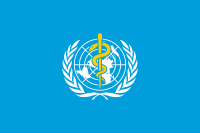
Photo from wikipedia
HALLMARKS OF AGEING AND PERSONALISED EXERCISE RECOMMENDATIONS Ageing is a universal phenomenon that affects all humans. It is an inevitable process usually characterised by a gradual decline in physical and… Click to show full abstract
HALLMARKS OF AGEING AND PERSONALISED EXERCISE RECOMMENDATIONS Ageing is a universal phenomenon that affects all humans. It is an inevitable process usually characterised by a gradual decline in physical and cognitive function over time. Recent research in the field of geroscience has focused on exploring the potential for antiageing interventions. Researchers have identified 12 distinct ageing traits, referred to as ‘hallmarks’, which are interconnected and become apparent with age. The 12 hallmarks include genomic instability, telomere shortening, epigenetic modifications, loss of proteostasis, impaired macroautophagy, disrupted nutrient sensing, mitochondrial dysfunction, cellular senescence, stem cell exhaustion, altered intercellular communication, microbial imbalances and chronic inflammation. However, the extent to which the identified hallmarks can be targeted in realworld settings to potentially slow down, stop or even reverse the ageing process is uncertain. Preserving functional capacity and increasing disabilityfree life expectancy are crucial factors to consider when evaluating the impact of interventions on the health span in older adults. Habitual exercise engagement has long been known to attenuate many of the cognitive and physical declines seen in ‘typical’ ageing, suggesting that disuse rather than inexorable biological decline contributes substantially to the phenotype of ageing. However, limited research has been conducted on how personalised physical activity (PA) recommendations could optimise the impact of exercise on the capacity to perform daily activities and functional capacity. As one example, a customised, multicomponent exercise programme designed for older adults has been found to alleviate the reliance on others for daily activities (eg, toileting, transfers, mobility and stair climbing) that commonly arise during and following hospitalisation, as well as extend their health span, and enhance their quality of life.
Journal Title: British Journal of Sports Medicine
Year Published: 2023
Link to full text (if available)
Share on Social Media: Sign Up to like & get
recommendations!